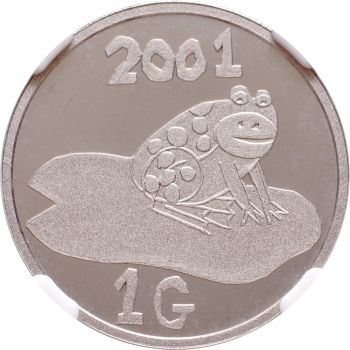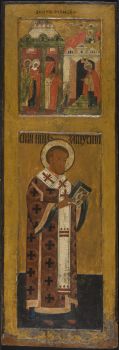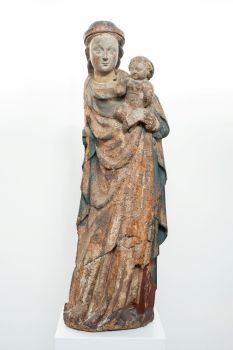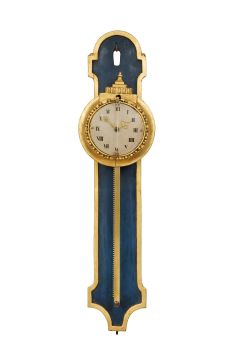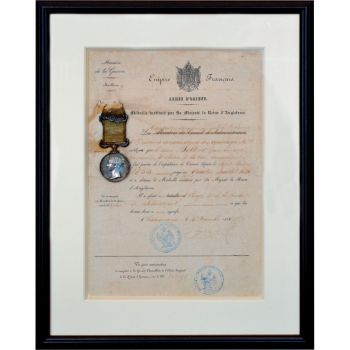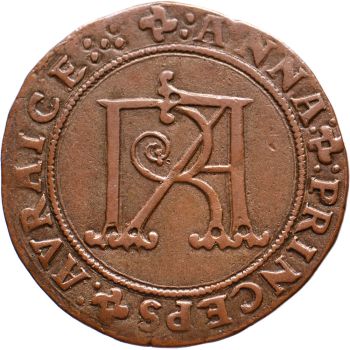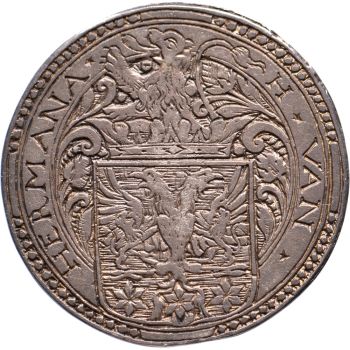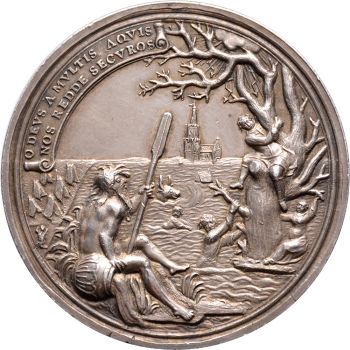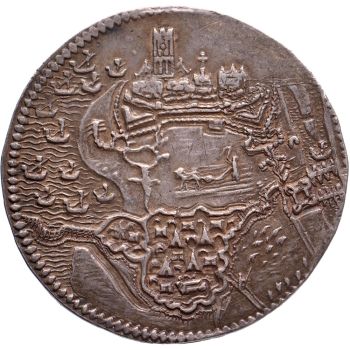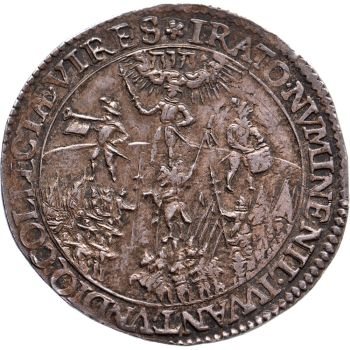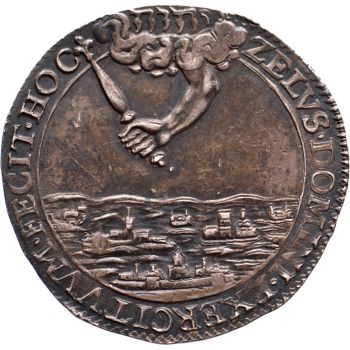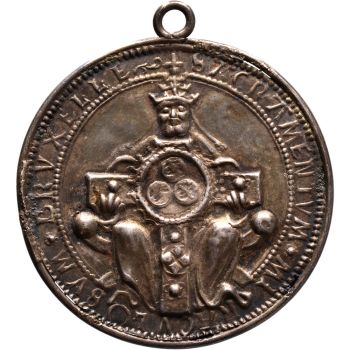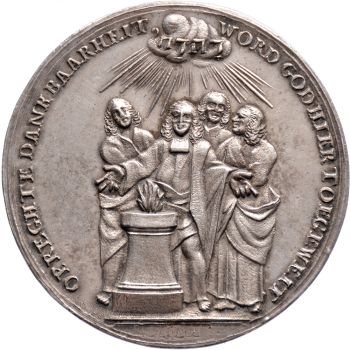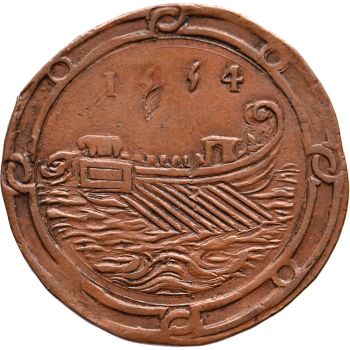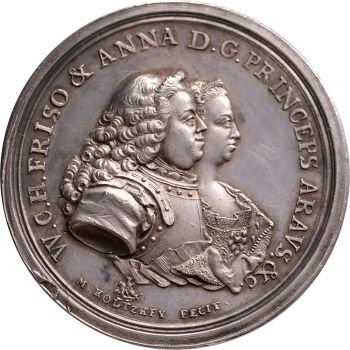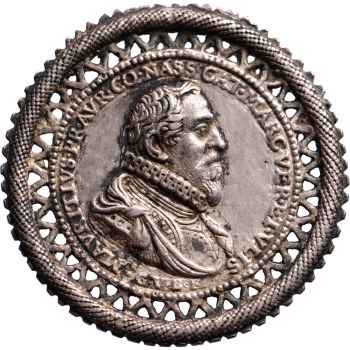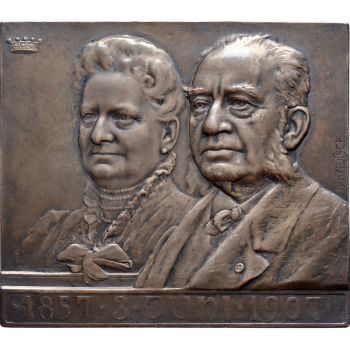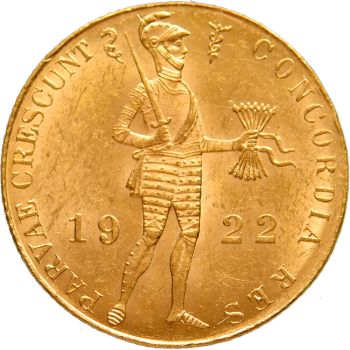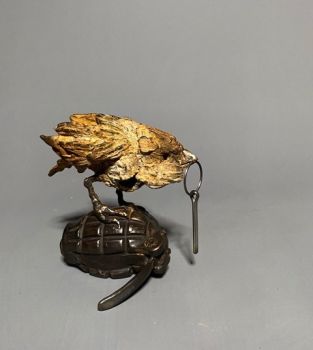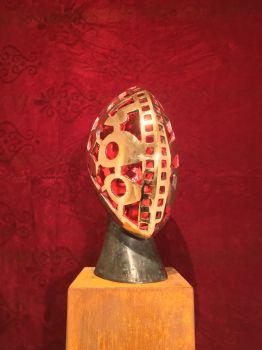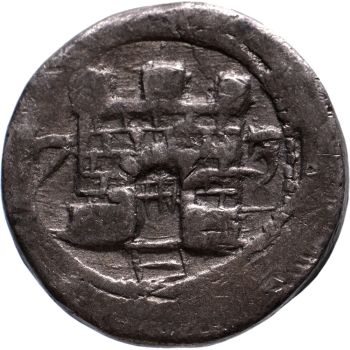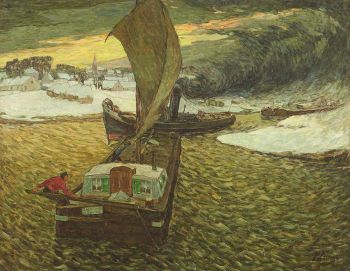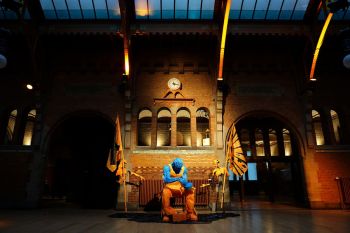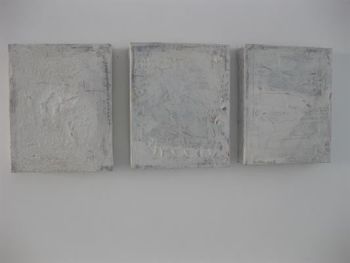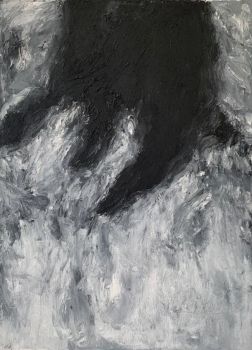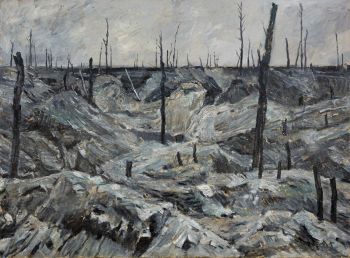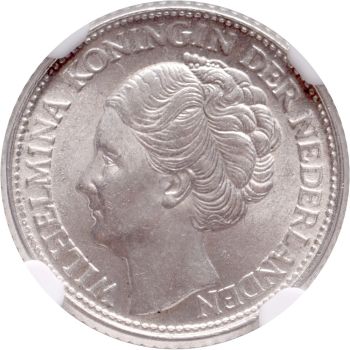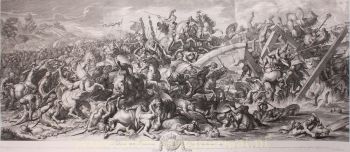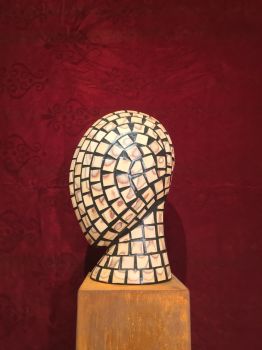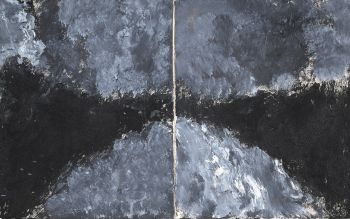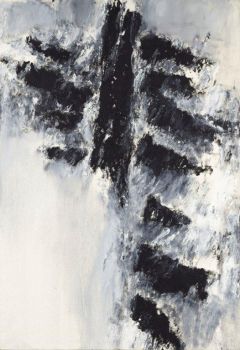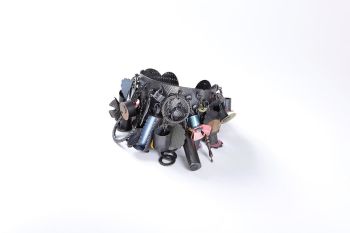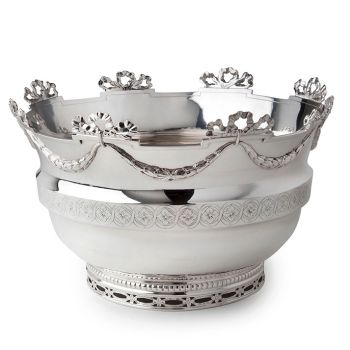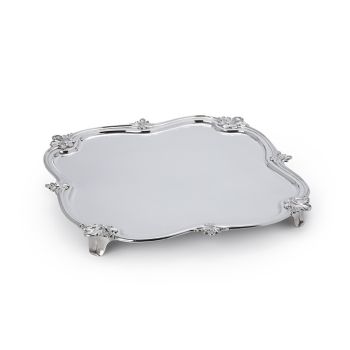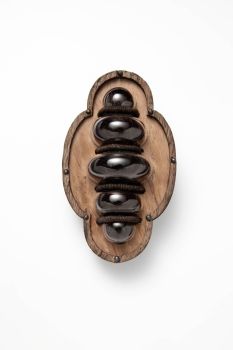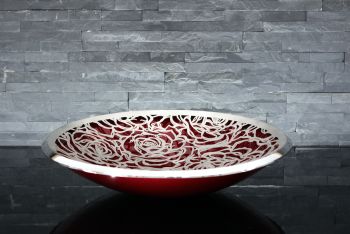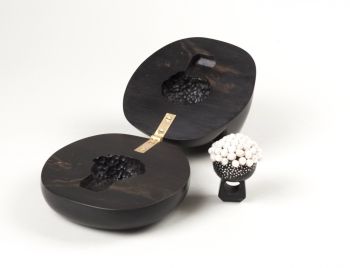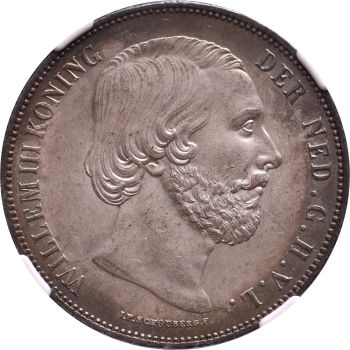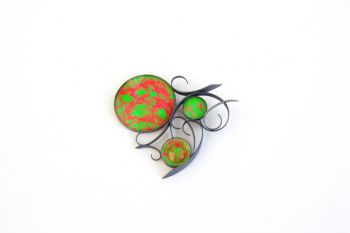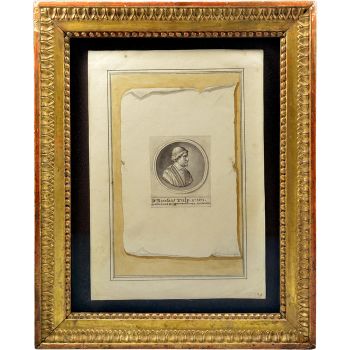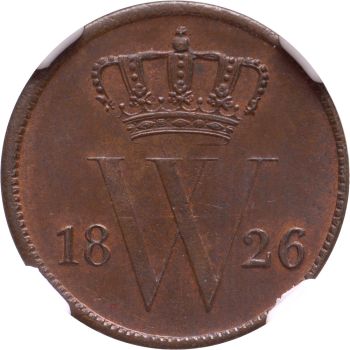Victory over the Spanish fleet at Zeeland / Battle on the Slaak 1631
Artista Desconhecido
Prata
€ 6.500
Jongeling Numismatics & Ancient Art
- Sobre arteObverse: Verè surrexit De9 / et dissipati sunt / Inimici ei9 [GOD HAS STOOD UP AND HIS ENEMIES HAVE BEEN DISSIPATED], view of West Brabant and the Zeeland islands, ships
Reverse: D. O. M. / Hisp. classem ausp. / Ord. Belgij, Ductu Fr. Hen. / Pr. Aur. sub legato suo in Zeel. / Hollario dissipavit intra Vianen / & Stavenisse, expòst nebulâ circum / susam, vadisque allisam, in manus / suorum omnes dedit, aut perdidit, / solo Prœfecto Com. Ioh. de Nassau / socijsque. x. exeptis, LXXVI navi / bus, & MMMMCXL militibus / captis, perque castra Principis / Bergam ad Zomam gregatim / deductis. XIII September / Anno – 1631. [THE BEST AND GREATEST GOD. UNDER THE RULE OF THE STATES GENERAL AND THE COMMAND OF FREDERICK HENRY PRINCE OF ORANGE AND HIS LIEUTENANT HOLLAAR, THE FLEET OF THE ENEMY HAS BEEN DESTROYED BETWEEN VIANEN AND STAVENISSE, AND HAVING STRANDED AND BURNED THE VESSELS, ALL THEIR CREW HAVE BEEN TAKEN PRISONER EXCEPT THE SUPREME COMMANDER JOHN OF NASSAU AND TEN OF HIS STAFF, WITH 76 VESSELS CAPTURED, 4,140 SOLDIERS TAKEN PRISONER AND BROUGHT TOGETHER TO BERGEN OP ZOOM ON SEPTEMBER 13TH, 1631]
By Johannes Looff
VERY RARE
Joost van den Vondel (1587-1679) wrote a poem about this sea battle entitled “Triomforts over the Neêrlaegh der Koninglyke Vlote op het Slaak”.
The Battle of the Slaak in 1631 was an encounter between a Dutch fleet and a Spanish fleet during the Eighty Years' War between the Netherlands and Spain. In an attempt to separate Zeeland from Holland, the Spanish fleet of 124 ships planned to capture the Ooltgensplaat. In response, Prince Frederik Hendrik ordered to gather all the warships that the admiralties of Holland and Zeeland could supply at that time: 50.
On the evening of September 12, the Dutch fleet threatened to overtake the Spaniards near Sint Philipsland, forcing them to enter the Slaak, a narrow channel influenced by the tide. The Dutch fleet then attacked. As a result of the unexpected attack, the unfamiliarity with the terrain and the rising fog, confusion arose among the Spanish troops, followed by general panic. Dozens of Spaniards jumped into the water to reach the mainland via the mudflats at De Heen and Vossemeer in the hope of not falling into Zeeland hands. However, they were met there by Dutch soldiers, often stationed in one of the forts of the Line of Unity. For example, more than 4,000 men were taken prisoner by Frederik Hendrik's army and deported to Reimerswaal. The Spanish naval force was devastatingly defeated. Only eight Spanish ships reached Dinteloord, meaning the Spanish had to abandon the original plan. The other ships had been sunk or boarded.
Weight: 39.75 g
Diameter: AR 55.0 mm
Grade: Extremely Fine
Mint: Middelburg
Reference: VL. II, 197.5; Vanhoudt 1631.7 - Sobre artista
Pode acontecer que um artista ou criador seja desconhecido.
Algumas obras não devem ser determinadas por quem são feitas ou são feitas por (um grupo de) artesãos. Exemplos são estátuas dos tempos antigos, móveis, espelhos ou assinaturas que não são claras ou legíveis, mas também algumas obras não são assinadas.
Além disso, você pode encontrar a seguinte descrição:
•"Atribuído a …." Na opinião deles, provavelmente uma obra do artista, pelo menos em parte
• “Estúdio de…” ou “Oficina de” Em sua opinião um trabalho executado no estúdio ou oficina do artista, possivelmente sob sua supervisão
• "Círculo de ..." Na opinião deles, uma obra da época do artista mostrando sua influência, intimamente associada ao artista, mas não necessariamente seu aluno
•“Estilo de…” ou “Seguidor de…” Na opinião deles, um trabalho executado no estilo do artista, mas não necessariamente por um aluno; pode ser contemporâneo ou quase contemporâneo
• "Maneira de ..." Na opinião deles, uma obra no estilo do artista, mas de data posterior
•"Depois …." Na opinião deles uma cópia (de qualquer data) de uma obra do artista
• “Assinado…”, “Datado…” ou “Inscrito” Na opinião deles, a obra foi assinada/datada/inscrita pelo artista. A adição de um ponto de interrogação indica um elemento de dúvida
• "Com assinatura ….”, “Com data ….”, “Com inscrição ….” ou “Tem assinatura/data/inscrição” na opinião deles a assinatura/data/inscrição foi adicionada por outra pessoa que não o artista
Você está interessado em comprar esta obra de arte?
Artwork details
Related artworks
- 1 - 4 / 12
Artista Desconhecido
N.d. Murder of Johan and Cornelis de Witt in The Hague1672
€ 2.250Jongeling Numismatics & Ancient Art
 Com curadoria de
Com curadoria deDanny Bree
1 - 4 / 24- 1 - 4 / 24
- 1 - 4 / 24
- 1 - 4 / 12




